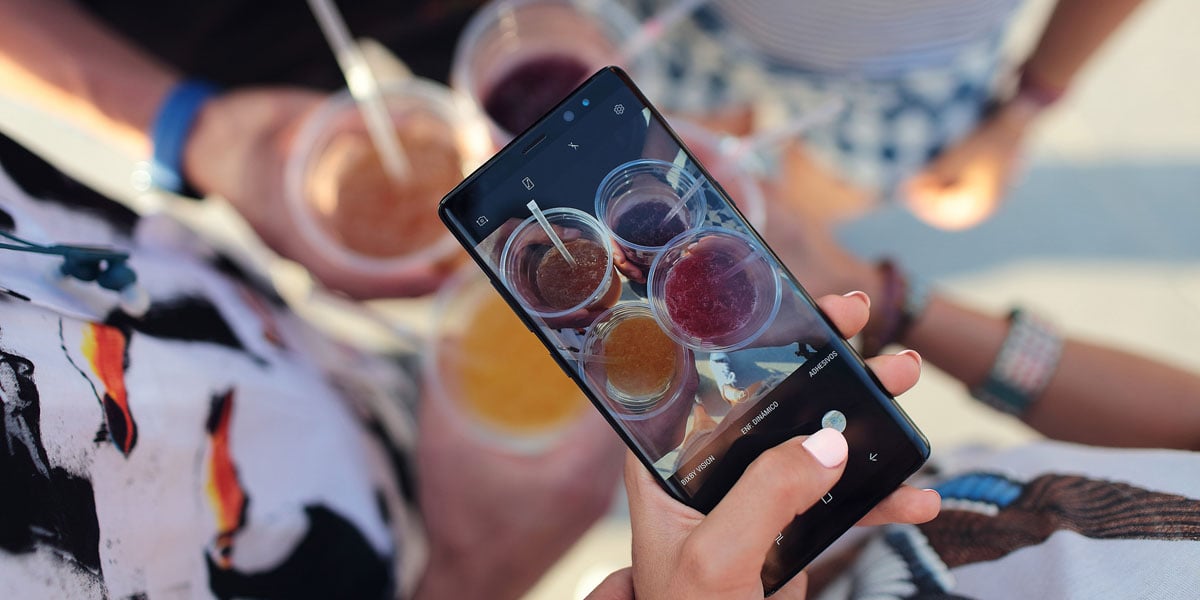Think about how much time you spend curating content for you social media feed.
UGC can reduce that significantly since you don’t need to invest money or time into creating content in-house.
Even the reviews you make into images or videos will take half the time it would take to create social media posts completely from scratch.
Granted, you’ll still have to find the content and ask for permission to use it, but it’ll take much less time than starting from scratch!
And the best thing about the reviews and testimonials is that they are evergreen content. Which means you get to post them multiple times. To make things even better - Sendible has a feature that allows you to automate the repurposing of evergreen content.
5 proven ways to get more user-generated content

You understand the value of user-generated content, but how exactly do you get it?
(Spoiler alert: The answer isn’t “sit back and wait for it to come.”)
Big-name brands have been using UGC almost exclusively in their marketing strategy, but you’ll need to put in some initial legwork before the glowing reviews arrive in your inbox.
Here are five proven ways to get started with collecting user-generated content:
- Regularly survey your audience
- Commission powerful case studies
- Run a social media contest
- Create a unique Instagram hashtag
- Get personal with your audience
1. Regularly survey your audience
If you really want the low-down on what your social media target audience thinks, don’t go round the houses - head straight to the horse’s mouth.
Ask your social media followers or current customers for feedback, such as:
- Why do you like this product?
- What made you chose us, over a competitor?
- What do you think about our story?
- What did you enjoy most about your purchasing decision?
- Would you recommend our product/service? If so, why?
Answers to those questions make for a fantastically powerful UGC.
Just take this response, for example: “I chose CLIENT because I was looking for a simple way to organize my receipts, and their software does exactly that. I couldn’t imagine using anyone else - I recommend them to everyone I know!”
Wouldn’t you love to post that to your client’s Facebook Page?
Blenders Eyewear did exactly that, and used their UGC to drive Facebook ads. Their review-based UGC ended up lowering overall CPAs by 38%, increased their return on ad spend by 62%, and decreased their CPC by 40%.
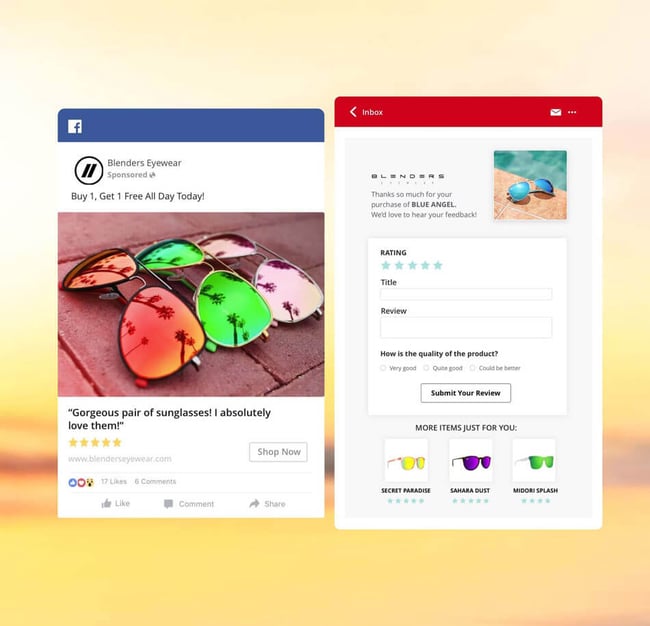
That’s a result you’d love to report back to your client, right?
2. Commission powerful case studies
Another proven way to generate UGC for your business is to commission case studies.
First, create a list of customers who love your product or services. That might be people who:
- Engage with them regularly
- Purchase repeatedly
- Have already left a positive review
Hop on a call with them and ask them personalised questions to expand on their feedback.
A 15-minute interview can generate tons of UGC you can repurpose on a social media platform!
But if you don’t have the time to spare, you could always pay for a service like Case Study Buddy who will handle the interviews, and put together a neat-looking document for you.
Loop has a fantastic example of how case studies can give you tons of UGC. They have five case studies on their website, each with a brief overview of the client they worked with and the results they generated.
Here’s a snippet from their case study on ASOS:

If Loop were your client, that’d be a great source of user-generated content to sprinkle their social media feeds with - especially when 72% of customers don't take action until they have read reviews.
3. Run a social media contest
Everyone has a competitive streak - even those who didn’t put maximum effort into sports day in school.
(I’m speaking from experience.)
Running social media contests is a superb way to bring out that competitive nature, while also generating tons of high-quality UGC for your brand.
Just take GoPro, for example. They have one of the biggest Instagram accounts, but the majority of content posted to their profile is generated by users of their product, which they collect through their photo and video contests:

The result of these contests? High-quality UGC, like this:
Taco Bell also takes the contest approach on social media. They created their own Snapchat filter in celebration of Cinco de Mayo - a filter that received almost 224 million views, and resulted in being Snapchat’s best-performing campaign.
Their campaign prompted people to take a photo or video with the filter (UGC), and share it with their friends:
#listenupListenup @tacobell Even your Snapchat filter is upset by the lack of #lavasauce. Diablo sauce just doesn't cut it. #belltopay pic.twitter.com/zo8hGkMmnt
— The Bell Raiser (@bellraiser) October 31, 2017
Want to get in on the action, but don’t have the budget for expensive Snapchat campaigns?
Think of a social media contest you could run for your clients to get their audience engaged, and prompt them to create content you could use.
That could include awards for:
- The best tutorial for your product
- The best photo of your product
- The best application of your product
Then, think about incentives you could offer to get your client’s audience involved. Whether it’s a cash prize or discounts off future purchases, give their audience a nudge with a solid reason to create their own user-generated content that you can use for your client.
4. Create a unique Instagram hashtag
Hashtags have the power to significantly boost your client’s organic reach on social media. That’s important - especially when most big platforms are forcing brands to put some cash behind their content to make it visible to their followers.
Hashtags make your content visible to people browsing a hashtag feed (who might not already follow their account). They are also a strong social SEO factor.
But should you jump onto an already-popular Instagram hashtag, or start from scratch with your own unique phrase?
My answer is: The latter.
By running a campaign and creating a unique hashtag, you’re able to sieve out user-generated content that your client’s audience are using to get involved with.
Just take Wayfair’s #WayfairAtHome campaign. The hashtag has been used over 56,000 times on Instagram alone - all of which are photos and videos their audience have created, uploaded and hashtagged:
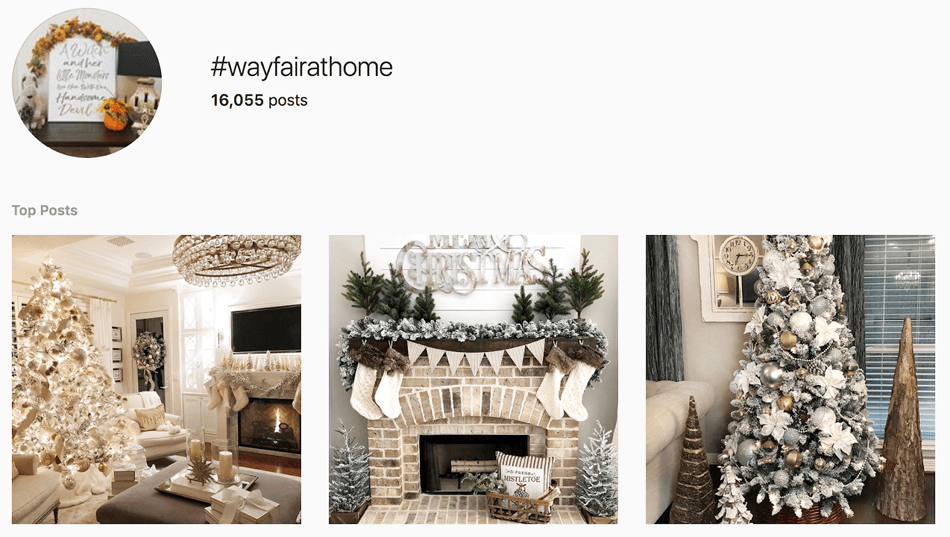
Wouldn’t you want that huge pool of UGC to dip into when planning your social media calendar?
Starbucks also took this approach with their #WhiteCupContest - a campaign they ran in 2014 to boost the user-generated content in their arsenal. They encouraged customers to doodle on one of their signature white cups, and upload their designs to social media using the hashtag:
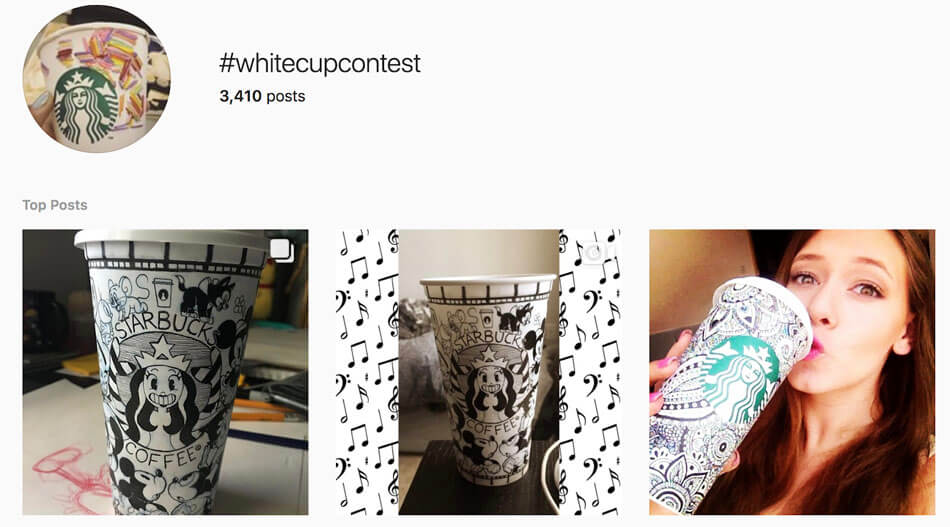
The #SugarBearHair hashtag, created by Sugar Bear Hair brand, encourages their customers to use their own hashtag too:
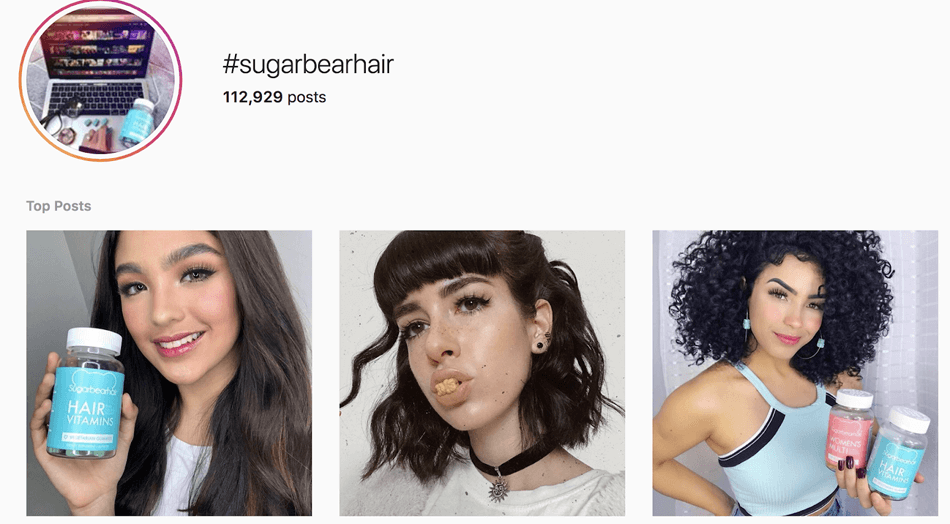
...As does Australian beauty brand Sand and Sky with the #sandandsky hashtag:
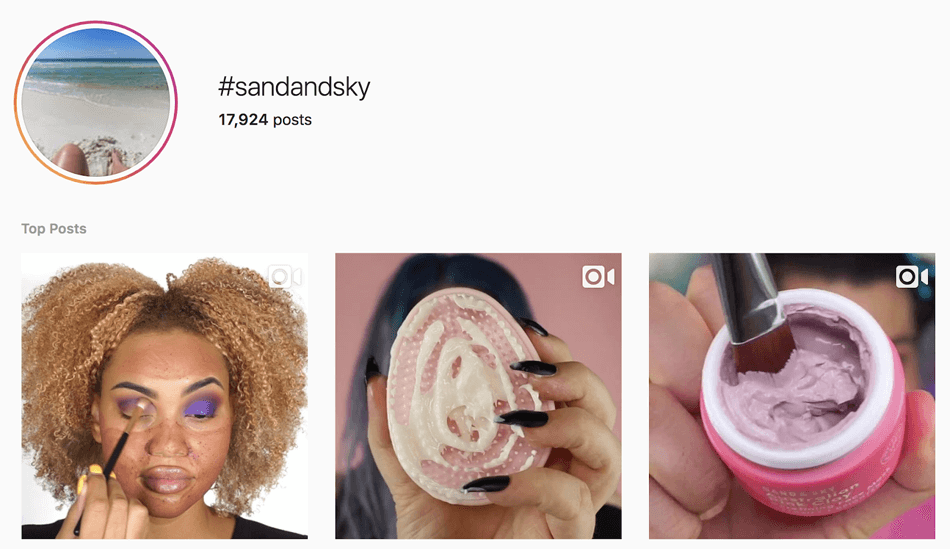
You can begin to create a winning hashtag that generates tons of user-generated content for your business by:
-
Thinking of a unique hashtag that includes your brand name.
-
Promoting the hashtag on your social media profiles.
-
Encouraging your customers to use the hashtag within purchase confirmation emails.
Remember to keep an eye on the hashtag feeds for your custom phrase and use Sendible's analytics tool to monitor engagement metrics on various hashtags so you know what is working for your brand.
Find the highest quality photos and videos, and bookmark them for future use on social media!
5. Get personal with your audience
Read any “marketing trends for next year” blog posts, and I’ll bet my bottom dollar that personalisation makes an appearance.
Questioning how personalisation ties into user-generated content?
(That’s what this article is about, after all.)
Here’s your answer:
People are more likely to share something when it’s personalised. And in social media terms, those “shares” could be anything from a photo of your product to a review of your service - acting as user generated content.
The most notable example of this put into practice comes from Coca-Cola. Their iconic #ShareACoke campaign saw them produce personalized bottles with names on, and it took the country by storm.
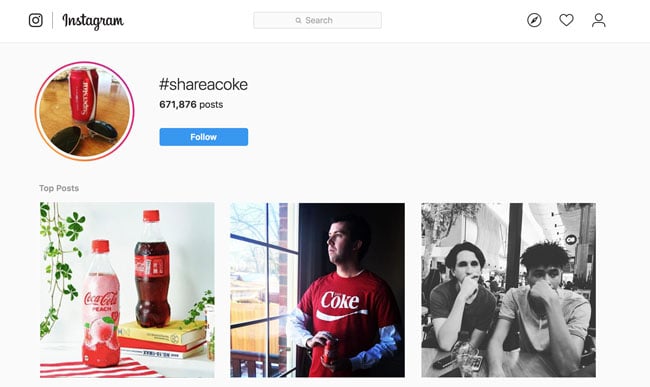
It also generated thousands of photos and videos for the Coca-Cola team to use:
Sometimes, when you’re half-way across the country, you can still #ShareACoke with your dad for the Holidays 😁@CocaCola pic.twitter.com/Eyf8XV8R51
— Ryan Trabuco (@RyanTrabuco) December 3, 2018
But running a personalisation campaign doesn’t mean you have to start manufacturing millions of personalised products.
You could:
-
Run an event that gives your audience personal mementoes (such as branded swag).
-
Create a hashtag and encourage people visiting their location to use it - like this example by SEMrush:
The @SEMrush team is at #DSDal! 🎉🎉🎉
— SEMrush (@semrush) December 4, 2018
🤳Stop by our booth and show that you are #HereWithSEMrush by taking a selfie with us. 5️⃣ lucky winners will be selected to win an awesome prize! pic.twitter.com/G0bM0YhB60
While this tactic of generating user-generated content is definitely more maintenance-intensive, it can pay off in the long run when you have a huge portfolio of user-generated content to share on your client’s feed!
Do I need to ask for permission to use my client’s UGC

You’ve asked for user-generated content, and after keeping a close eye on your branded hashtags, you find a ton of high-quality user-generated content you could post to their social media platforms.
But before you dive straight in, you need to ask the original creator for permission to repost it on multiple platforms.
(It is their own content on their social media posts, after all.)
Drop a quick message to the original creator that goes something like this:
“Hey! I just saw your post using our hashtag, and I’d love to share with CLIENT’s audience. Would you mind if we re-posted?”
Chances are, they’ll say yes - and you’re free to use their photos, videos and reviews to your heart’s content.
This is a great way to encourage customers to share their user-generated posts, increase brand awareness, and tap into awesome content created with your client's services or products.
Final thoughts on collecting user-generated content
Are you ready to kickstart a user-generated content marathon and collect tons of photos, videos and reviews of your product or service?
It’s worth it - especially when it can save time and boost your ROI.
Now that you've learned about user-generated content, it's time to promote it on your social media platforms.
Remember to constantly make the ask for contributed content, give people an incentive to build brand loyalty and submit their own user-generated content, and constantly monitor their social media performance to double-check the content you’re posting is sitting well with your audience.
Text copied!

